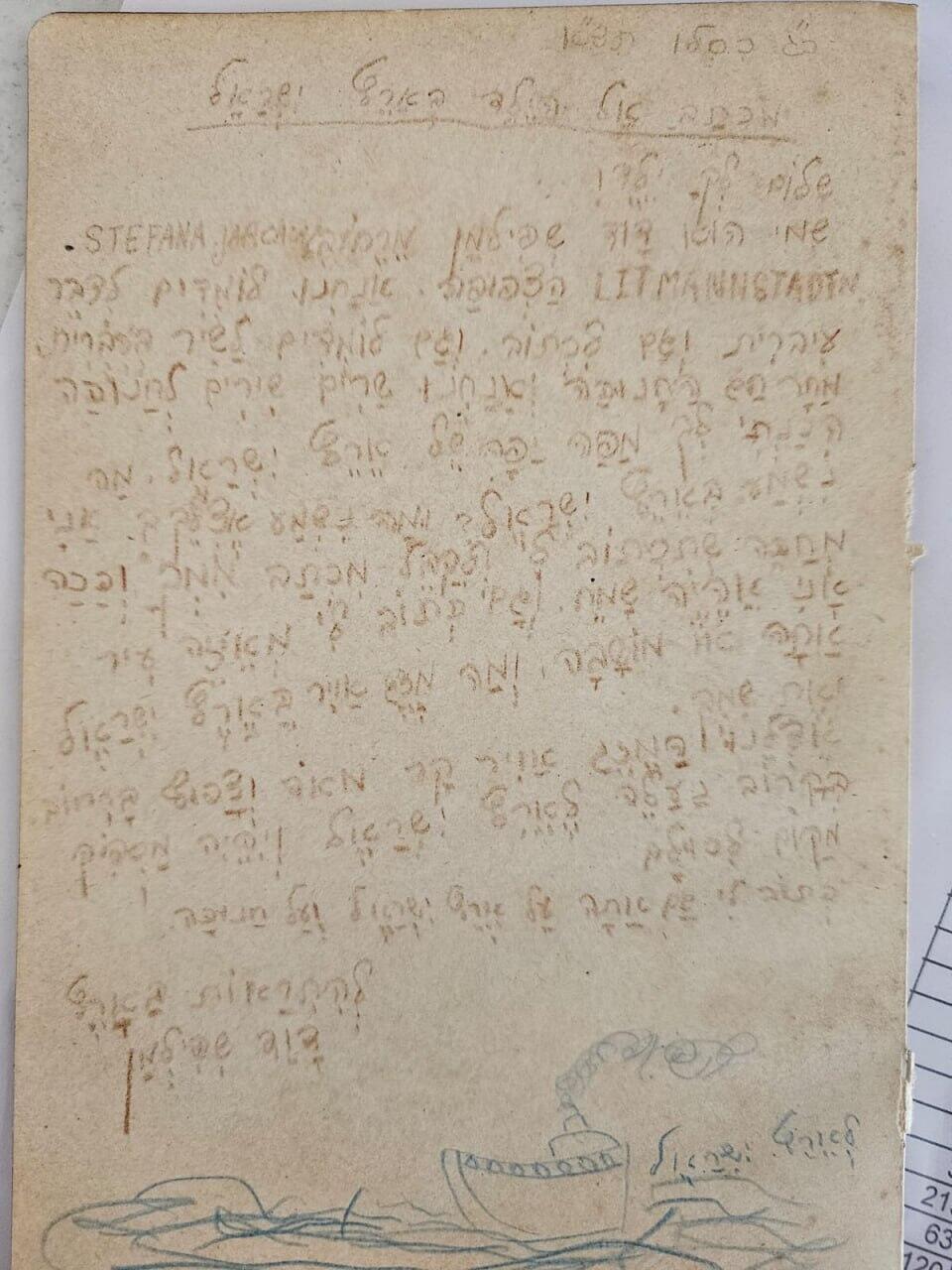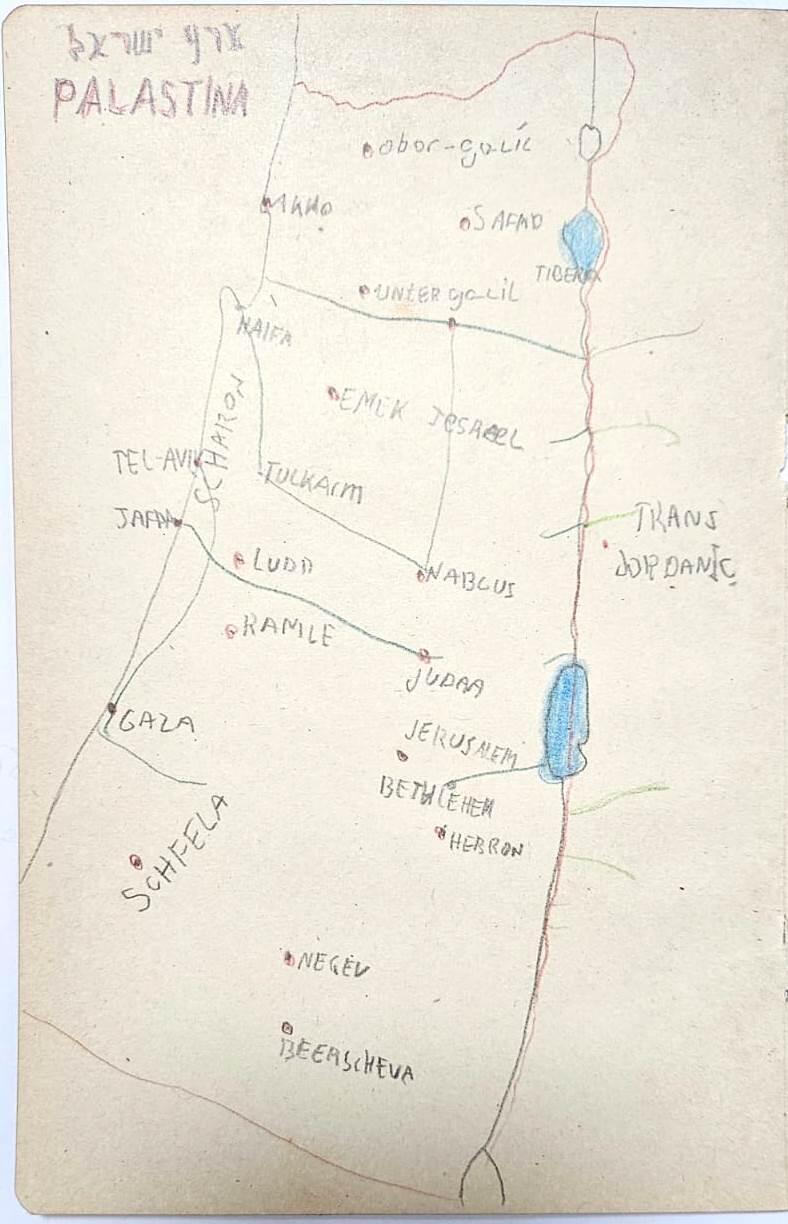Getting your Trinity Audio player ready...
A poignant letter written by David Spielman, a young Jewish boy from the Łódź Ghetto, to a "child in the Land of Israel," along with a drawing of a map of Israel dated December 23, 1940, is up for auction for museums and collectors at the Jerusalem auction house Dynasty.
The letter consists of two notebook pages. The first page, titled "Letter to the Child in the Land of Israel" in Hebrew, is dated December 23, 1940. The second page features a hand-drawn map of Israel, with major towns and cities marked in Polish by David.
This rare artifact from the Łódź Ghetto is a significant historical item. It remains unclear what happened to David Spielman and whether he survived the Holocaust. His name has not been found, raising fears that he may have been murdered by the Nazis. Based on the content and handwriting, it is evident that David was a young child, likely a first-grader just beginning to learn how to write. He prepared the letter as part of an assignment to write to children in the Land of Israel.
David Spielman likely did not know who he was writing to, other than addressing the letter to a child in the Land of Israel. He describes the ghetto as a crowded place, which aligns with the time when approximately 200,000 Jews were crammed into the ghetto. According to the ghetto map, Stefana Jaracza Street, mentioned in the letter, was one of the main streets in the Łódź Ghetto.
The letter, which never made it to the Land of Israel, was recently discovered in a basement in the Łódź area, within a notebook containing numerous documents related to Jews. It eventually reached the Jerusalem auction house, part of a collection of notebooks with documents originating from the Łódź Ghetto.
"This child's emotional letter stood out among the pile. Writing from the crowded Łódź, the child expresses his longing to come to the Land of Israel. What could be more touching? He asks the Israeli child to write back, saying it would make him happy. You can really sense the sadness of the ghetto between the lines. It’s chilling," said Itamar Hai, manager of the Dynasty auction house. According to him, there is already interest from museums looking to purchase the letter.
Here is the text of the letter: "Letter to the Child in the Land of Israel. Hello, child! My name is David Spielman from 6 Stefana Jaracza Street in crowded Litzmannstadt. We are learning to speak and write Hebrew. We also learn to sing in Hebrew. Tomorrow is Hanukkah, and we are singing Hanukkah songs. I made you a beautiful map of the Land of Israel. How are things in the Land of Israel? How are you? I am waiting for you to write to me, and receiving a letter from you will make me happy. Also, tell me which city or settlement you are from and what the weather is like in the Land of Israel, and your name. Here, the weather is very cold and the street is crowded. Soon we will come to the Land of Israel, and there will be enough room for everyone. Please write to me about the Land of Israel and Hanukkah. See you in the Land of Israel, David Spielman."
Below the letter, the child drew a picture of a ship sailing on waves with the caption "To the Land of Israel." On the next page, David illustrated a map of Israel with the captions "Land of Israel" and "Palestine."
According to German orders, when the Łódź Ghetto was established, all Hebrew schools in the city moved into the ghetto, where 90% of Jewish students attended. In the first school year, about 11,000 students attended schools in the ghetto, but their numbers significantly decreased over time. By mid-1940, only about 7,300 students were left.
The education system included an orphanage, a vocational school, two high schools, a religious school, day camps, and elementary schools. Initially, there was an attempt to maintain the education system as it was before the war, but feeding the children quickly became one of its primary goals. By early 1941, some schools closed due to a lack of buildings in the ghetto, and after the summer break, all schools were shut down.
Additional educational programs were held in the ghetto, including those that tried to combine work with lessons. The youth of the ghetto established several educational and cultural frameworks, such as "Desert Generation Front," which focused on educating young people and even celebrated holidays in the ghetto.




